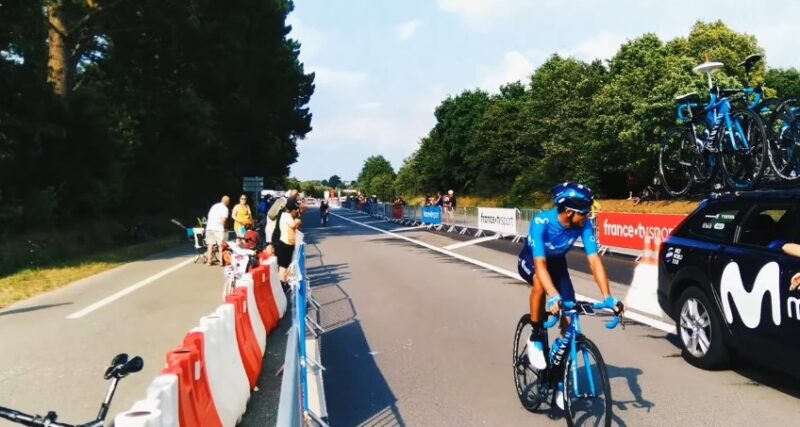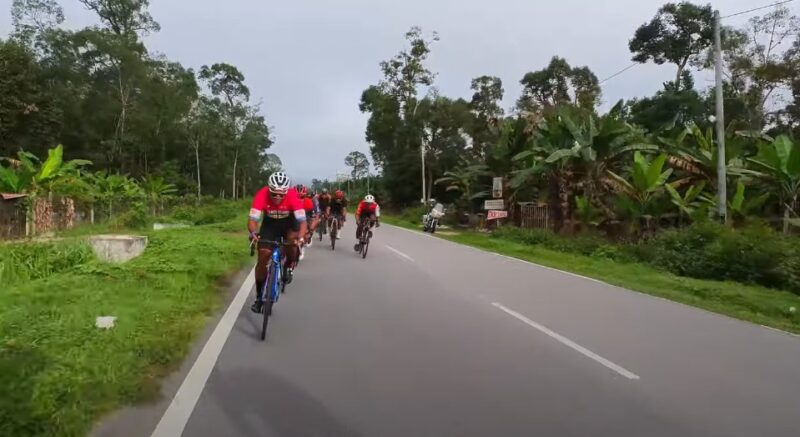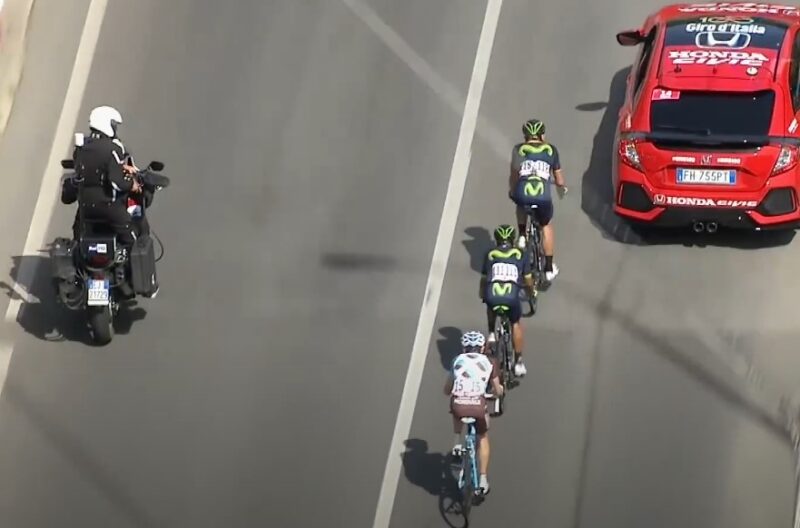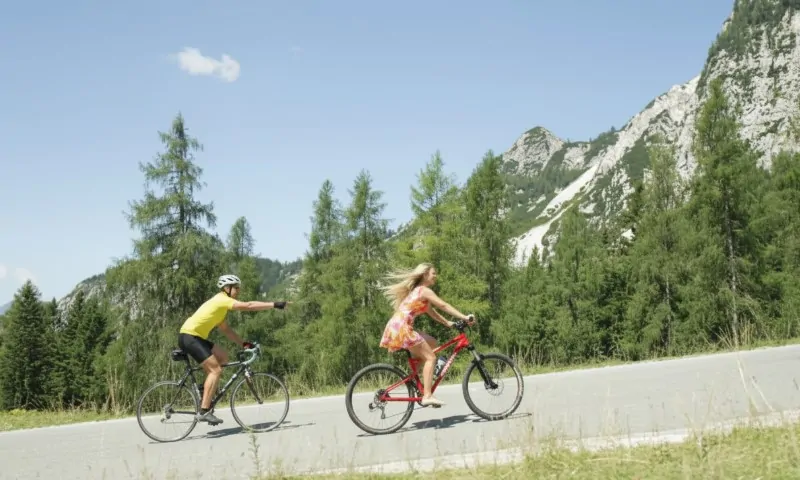Cycling is often celebrated for its heroic solo breakaways and dramatic sprint finishes. Yet, hidden behind these moments of glory is a group of unsung heroes known as domestiques.
These riders play a vital role in their teams, working tirelessly for their leaders without seeking individual accolades. But what exactly makes a good domestique?
Table of Contents
ToggleThe Essence of a Domestique

The term “domestique” might sound fancy, but it translates to “servant” in French. In the context of road bicycle racing, a domestique is a rider who supports their team and leader.
Their primary role isn’t to chase personal victories but to ensure the team leader is in the best possible position to win.
Historical Perspective
The concept of the domestique isn’t new. It dates back to the early 20th century, with the first known domestiques appearing in the 1907 Tour de France. The term itself was first used in 1911, somewhat derogatorily, to describe Maurice Brocco.
However, Brocco’s impressive skills soon elevated the role’s perception, showing that a domestique’s contributions are indispensable.
Key Responsibilities of a Domestique
1. Creating a Slipstream
One of the primary tasks of a domestique is to ride in front of their leader to create a slipstream. This aerodynamic advantage reduces the air resistance faced by the leader, allowing them to conserve energy.
By sacrificing their own energy, domestiques make it easier for their leader to maintain a high pace with less effort.
2. Tactical Maneuvering
Races aren’t just about who pedals the hardest; they’re about strategy. Domestiques play a crucial role in executing team tactics. Whether it’s setting a pace that tires out competitors, chasing down breakaway riders, or shielding their leader from wind, their strategic positioning is vital.
In challenging conditions like steep climbs, narrow roads, or windy sections, a domestique’s ability to position the team leader advantageously can make all the difference.
3. Supply Carriers
Domestiques often act as the team’s “watercarriers.” They drop back to the team car to collect food, drinks, and other supplies, then deliver them to their teammates.
This ensures that the leader and other key riders can stay focused on the race without having to expend extra energy fetching supplies.
The Traits of a Good Domestique

Physical Attributes
The physical demands on a domestique vary depending on the race terrain. Some are more suited to flat stages, while others excel in mountainous regions.
Regardless of their specialization, all domestiques need to be strong, resilient, and capable of enduring long, grueling rides. Their fitness levels must be exceptional to perform their duties effectively.
Acceptance of the Role
Arguably, the most important trait of a good domestique is the acceptance of their role. As Luke Rowe, a professional domestique, puts it, “The biggest part for me is that role acceptance – accepting that I’m going to give all I’ve got for this guy and that means there’s no real opportunity for me.”
This mindset is crucial because it underscores the selflessness required. A good domestique must be willing to sacrifice their own ambitions for the team’s success.
Team Dynamics
Being a domestique isn’t just about physical strength; it’s about fitting into the team’s strategy. Good domestiques understand their team’s tactics and execute them flawlessly.
They communicate effectively with their teammates and adapt to the dynamic nature of races. Their ability to read the race and respond to their leader’s needs is invaluable.
Super-domestiques
Within the ranks of domestiques, some stand out as super-domestiques. These riders are highly skilled and could potentially lead teams themselves.
They take on critical roles during the most challenging parts of races, often acting as lieutenants who guide and protect the team leader. Their experience and tactical acumen make them indispensable in major tours.
Notable Examples of Domestiques
Lucien Aimar and Greg LeMond
Some domestiques go on to achieve individual success. Lucien Aimar and Greg LeMond are prime examples. Both started as domestiques but later won the Tour de France.
Their journeys highlight the potential for growth and the importance of the domestique role in developing future champions.
Maurice Brocco
Maurice Brocco, initially labeled a domestique in a derogatory sense, proved his critics wrong by showcasing his racing prowess. His story is a testament to the respect and recognition that domestiques eventually earned within the cycling community.
The Evolution of the Domestique Role

The role of the domestique has evolved over time. Early domestiques were more like pacemakers, guiding their leaders from one location to another.
Today, the role is much more complex, with teams employing high-status riders as domestiques in major tours.
This evolution reflects changes in team dynamics and race strategies, emphasizing the increasing importance of domestiques in modern cycling.
Team Strategies
Team strategies have become more sophisticated, with domestiques playing varied roles depending on the race conditions. For example, during flat stages, domestiques might focus on creating a slipstream and chasing breakaways.
In mountainous stages, they might help pace their leader up steep climbs or protect them from attacks by rival teams.
Specialization
Modern teams often have domestiques who specialize in certain tasks. Some are experts in climbing, while others excel on flat terrain.
This specialization allows teams to have the right support for their leaders in different race scenarios, further highlighting the versatility and importance of domestiques.
The Unsung Heroes of Cycling

Domestiques are the unsung heroes of cycling. Their contributions might not always make headlines, but without them, many victories would be impossible.
They embody the spirit of teamwork, selflessness, and dedication that is at the heart of the sport.
A Day in the Life of a Domestique
To truly appreciate the role of a domestique, it’s worth considering a typical day in their life during a race. From the moment the race starts, domestiques are on the lookout for opportunities to support their leader.
They might shield their leader from the wind, chase down breakaways, or fetch supplies from the team car. Their work is relentless, often leaving them exhausted by the end of the day, but their efforts are crucial for the team’s success.
Recognition and Respect
While domestiques might not always receive the recognition they deserve, within the cycling community, their role is highly respected.
Fellow riders, team managers, and cycling enthusiasts understand the value of a good domestique. Their dedication and hard work are often acknowledged in post-race discussions and analyses.
Final Words
In the fast-paced, high-stakes world of professional cycling, domestiques play an indispensable role. They are the backbone of their teams, providing support, strategy, and sacrifice.
It doesn’t matter if it’s creating a slipstream, managing supplies, or executing complex tactics, domestiques ensure that their leaders have the best possible chance of victory.
So, next time you watch a cycling race, take a moment to appreciate the domestiques – the true unsung heroes of the sport.
Related Posts:
- 15 Michigan’s Best Bike Trails for Every Rider in 2025
- Are Shimano Clipless Pedals Good for Gravel?…
- Is Nishiki a Good Bike? - An Honest Review
- Is Trek 800 Mountain Bike Good? Here's Our Detailed…
- Are Kent Bikes Any Good Quality Brand - The Honest Truth
- Bike Seat Cushions - Are They Any Good? Here’s What…








